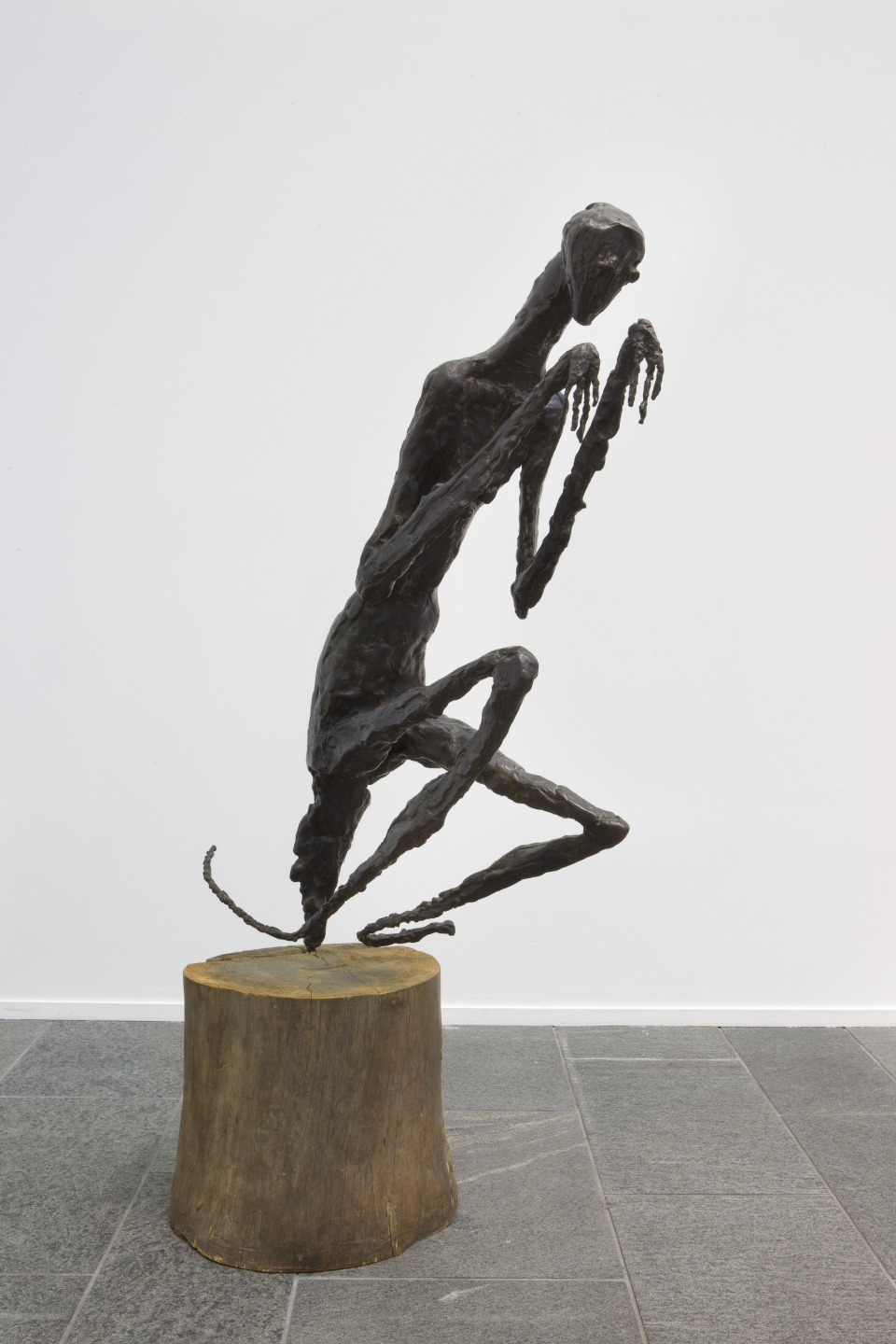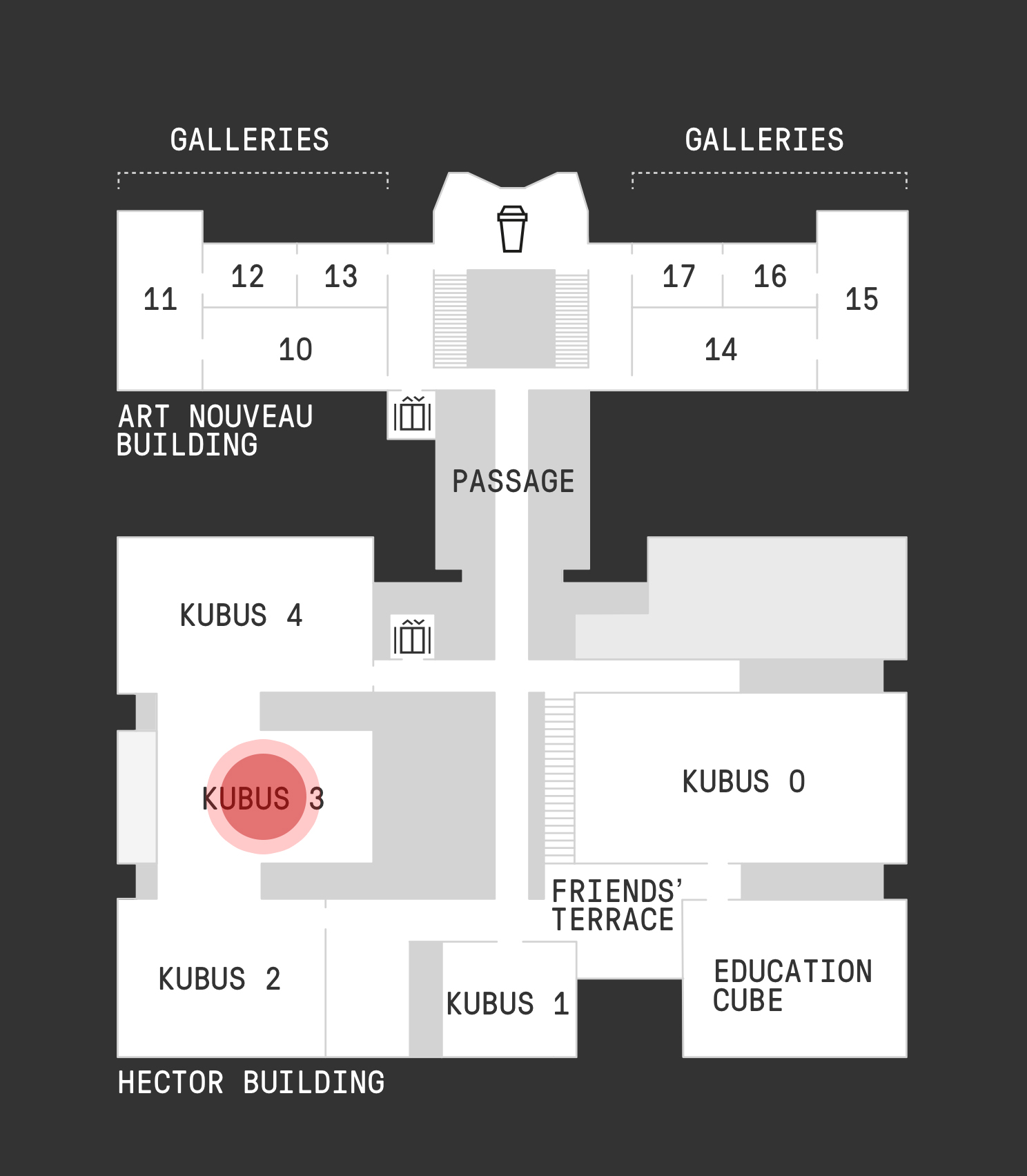
Germaine Richier
(1902-1959)
Germaine Richier
(1902-1959)La mante, grande
Intro
What are we witnessing here, a huge insect or a human body? The embodiment of an animal or the distorted figure of a person? Since the 1940s, Germaine Richier has fused the animalistic with the human, developing perplexing works from this combination of two worlds.
In the »Large Praying Mantis«, this Surrealist development, reminiscent of both a dream and a nightmare, is immediately apparent, incorporating elements that are animal (the elongated limbs and the thin body) as well as human (hands, a feminine torso, and a face). They are, however, insufficient to form either a complete insect or a complete person, with transformation and metamorphosis—along with the eerie and frightening aspect of the figure preparing to attack—taking center stage. It appears to be part of a dream world which Richier repeatedly attempts to access through her work.
Background
The early work of the important French sculptress Germaine Richier was influenced by her classical academic training at the Ecole des Beaux-Arts in Montpellier and her apprenticeship in Paris to Emile-Antoine Bourdelle (1861–1929), an assistant of Rodin. In the busts and torsos of the 1920s and 1930s, Richier experimented with the rough, fissured surface structure of Rodin’s work and the powerful forms of Bourdelle, which led to her first major success.
After the end of World War II and her return to Paris from exile in Switzerland, she arrived at an unusual language of form and content. For her contemporaries, Richier’s hybrid creatures – insect-women, bat-men and clawed creatures – were disconcerting and shocking. In the context of their creation, they point to the suffering and horrors of the war in general and the Holocaust in particular. Today, these long-limbed, emaciated beings continue to unsettle viewers; their skin, riddled with injuries and lacerations, seems like the very embodiment of physical and mental pain. Unlike the elongated figures of Alberto Giacometti (1901–1966), which are caught up in their loneliness, Richier’s figures are monstrously deformed humans, who remind us of the endurance – and the execution – of unimagined mental agony.
With its height of 1.2 metres, »La mante, grande«, or the »Large Praying Mantis« – acquired for the Kunsthalle Mannheim as early as 1970 – confronts the viewer with its threatening presence. The skeletal body is attached to insect-like legs, which are tensed and ready to spring; the head, with its protruding (compound) eyes, evokes a locust and yet, at the same time, also bears human traits. What interested Richier in these insect creatures was not only the aspect of metamorphosis, but also the way the fragile bodies moved through space. The sculptress treated the fundamental questions of the relationship between mass, form, posture and space with particular sensitivity: “I do not try to convey movement. My intention is above all to make the idea of movement seem imaginable. My sculptures should arouse the impression that they are motionless, and yet at the same time that they want to move.”
She thus strives to make visible that precise moment between a sense of tense calm and quickly jumping away. This is clearly demonstrated by the female mantis, which lies in waiting, motionless for hours, and then consumes the male immediately after the sexual act. The praying mantis also implies a sexual connotation, since even in Greek mythology it was regarded as a magical, seductive creature. Richier’s fascination with these insects and their symbolism is also rooted in her encounter with the Surrealists in Paris; for them, metamorphosis, alienation and suppressed desire were central themes. Moreover, she made a lifelong study of local flora and fauna, which she declared to be the “organic truth” and the starting point for her imagination, for “in this way one can arrive directly at poetry”.
Without robbing the figure of all its links with reality. After her premature death in 1959 at the age of only 55, Richier – whose work had been acclaimed during her lifetime – was forgotten for some years. When it was appreciated, it was mostly examined with regard to the influence of male colleagues, especially Giacometti. Today, however, Richier’s oeuvre stands firm as an original and individual achievement in the history of twentieth century sculpture. The metaphorical image of mankind which she developed served in its poetic sculptural execution as a model for many contemporary artists.
Transkription
A creature with an overly long neck, distorted limbs, a hardly discernible, huddled body. Also, a head like a skull, an intimation of breasts, and long, claw-like fingers grasping into the void. What do you think this is supposed to be? A giant insect? A distorted human body? Or even a combination of both?
In any case, this is an irritating work of art. The »Large Praying Mantis« fuses human with animal elements in a disturbing manner. The basic structure of the body appears human, but then there are animal details such as claws on the hands, the tail-like tapering of the back, the angular legs ending in feelers.
When World War II started in September 1939, Richier was vacationing in Switzerland. She and her husband decided to stay there. When, after the war, she returned to Paris, she started combining animal and human features in her work. The borders between the animal and the human world become blurred, any clear distinction between the two is rendered impossible.
Throughout her work, the sculptor deals with existential questions and fears. These are connected to her experiences in the Second World War, the horrors of which horrors she followed from her exile. Surrealistic works are created which remind the viewer of dreams and nightmares. The »Large Praying Mantis « is an expression of exactly this creative process, reflecting suffering and danger as well as fertility and unfathomable sexual drives.
By merging a human face, female body, and animal power, Richier created an ambiguous, expressive figure. How, then, shall we reply to the question what this is supposed to be? Even the title of the work is merely a tantalizing hint.
On loan from the State of Baden-Württemberg since 1970
Kunsthalle Mannheim / Cem Yücetas
)